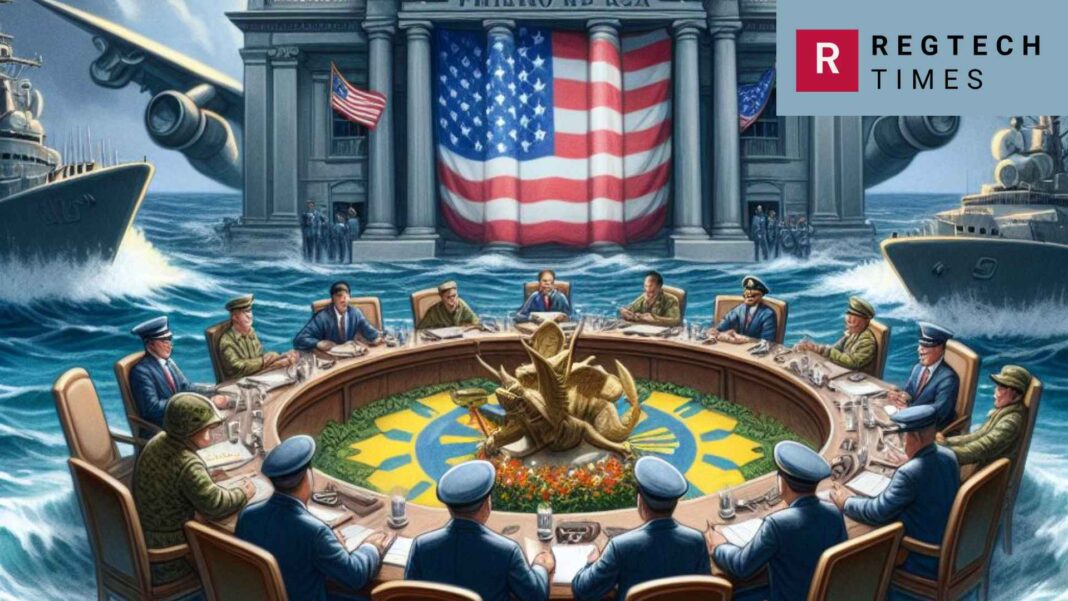Amid escalating tensions in the South China Sea and growing concerns over Taiwan, the Pentagon initiated Squad. Under the leadership of US Secretary of Defense Lloyd Austin, it is actively bolstering its regional defence strategy to counter China’s increasing threats and ambitions in the Indo-Pacific. This initiative has led to the formation of a new strategic alliance dubbed the “Squad,” consisting of the United States, Japan, Australia, and the Philippines.
Last week, defence leaders from these four nations convened in Hawaii, home to the US Indo-Pacific Command (INDOPACOM), to outline their collective vision for peace, stability, and deterrence in the region. “We have chartered an ambitious course to advance that vision together,” Austin said during a press conference alongside the defence summit.
Formation of Squad
The formation of the “Squad” follows closely on the heels of the first joint patrols by these nations in the contested South China Sea and a significant trilateral summit at the White House involving leaders from the US, Japan, and the Philippines.
Over the coming months, the alliance plans to enhance military interoperability, conduct additional joint patrols and drills, and improve intelligence and maritime security cooperation, all aimed at addressing the challenges posed by China’s expansive military activities across the Western Pacific.
- Biden Blasts 2 Quad Partners as Xenophobic Nations in Addition to Russia and China
- US, Japan, and Philippines Meet to Combat China Influence
- In the Shadow of Tensions: Philippines-USA Talks in the South China Sea
Philippine President Ferdinand Marcos Jr’s decisive pivot towards Western alliances and his firm stance on the Philippines’ territorial claims in the South China Sea have been pivotal in the rapid institutionalization of this new quadrilateral grouping. This strategic realignment marks a significant shift from the more reserved foreign policy under the previous administration, propelling the Philippines into a central role in the broader US strategy of “integrated deterrence” in the region.
Quad vs Squad
The QUAD initiative, led by the USA, is a strategic security dialogue between the United States, Japan, India, and Australia. It aims to strengthen cooperation and ensure a free and open Indo-Pacific region. The group focuses on areas like maritime security, cybersecurity, infrastructure, and humanitarian assistance.
Read More About US-led Cyberflag
In contrast to the well-known “Quad” alliance, which includes India, the “Squad” appears to have a more unified internal coherence and a clear, shared strategic vision. The “Quad” has experienced strains, particularly due to India’s continued close ties with Russia and its reluctance to align fully with Western positions on global conflicts. This could be the primary reason why US-led group has dropped India from the new initiative.
The emergence of the “Squad” is seen as an escalation in the strategic landscape of the Indo-Pacific, sparking reactions from China. Chinese state-run media have criticized the new alliance, claiming it exacerbates regional risks and complicates the already tense situation in the South China Sea. Beijing views the “Squad” as an extension of American efforts to contain China’s rise, which could lead to increased military and diplomatic tensions in the region.
As the “Squad” moves forward with its plans, the geopolitical dynamics in the Indo-Pacific are set to become even more complex, with significant implications for regional stability and international relations. The strategic posturing by both the alliance and China suggests that the South China Sea will remain a hotbed of geopolitical rivalry and manoeuvring for the foreseeable future.



